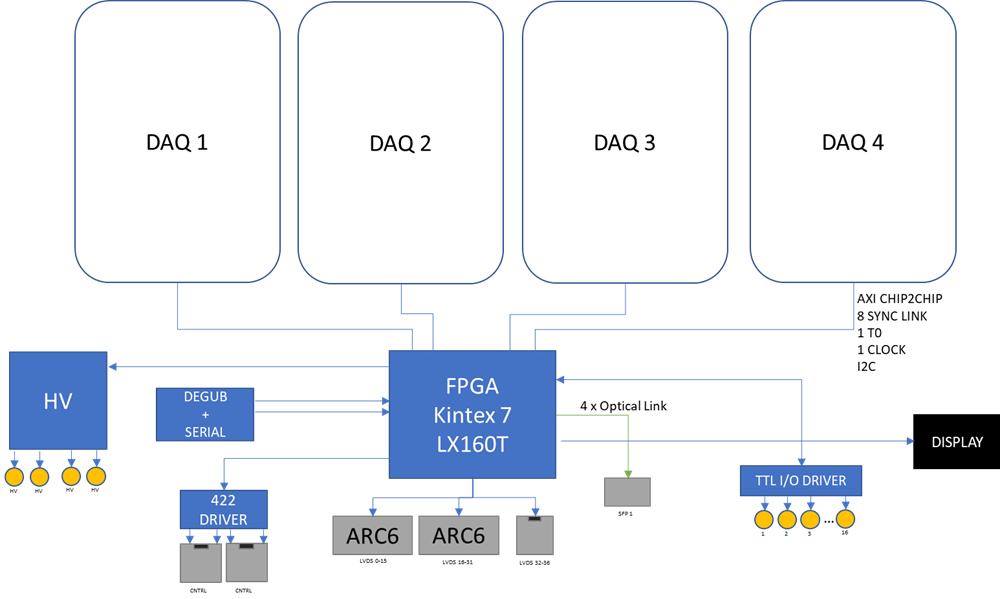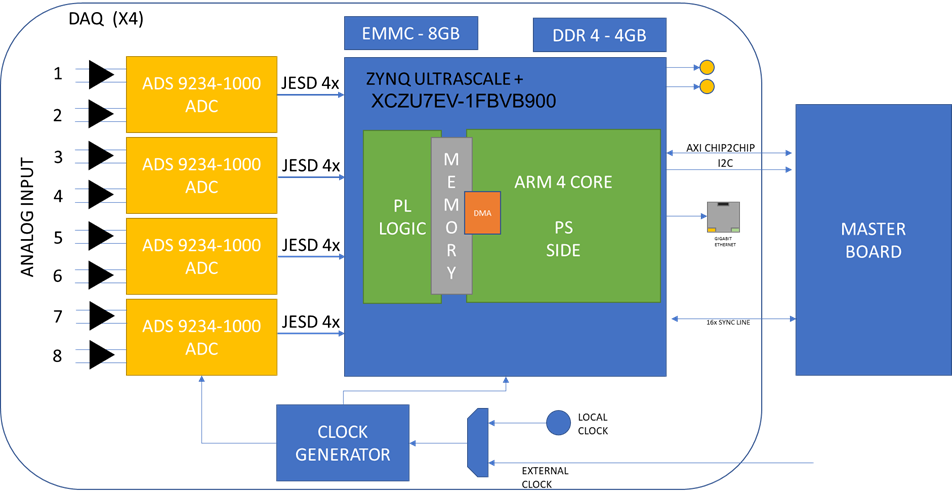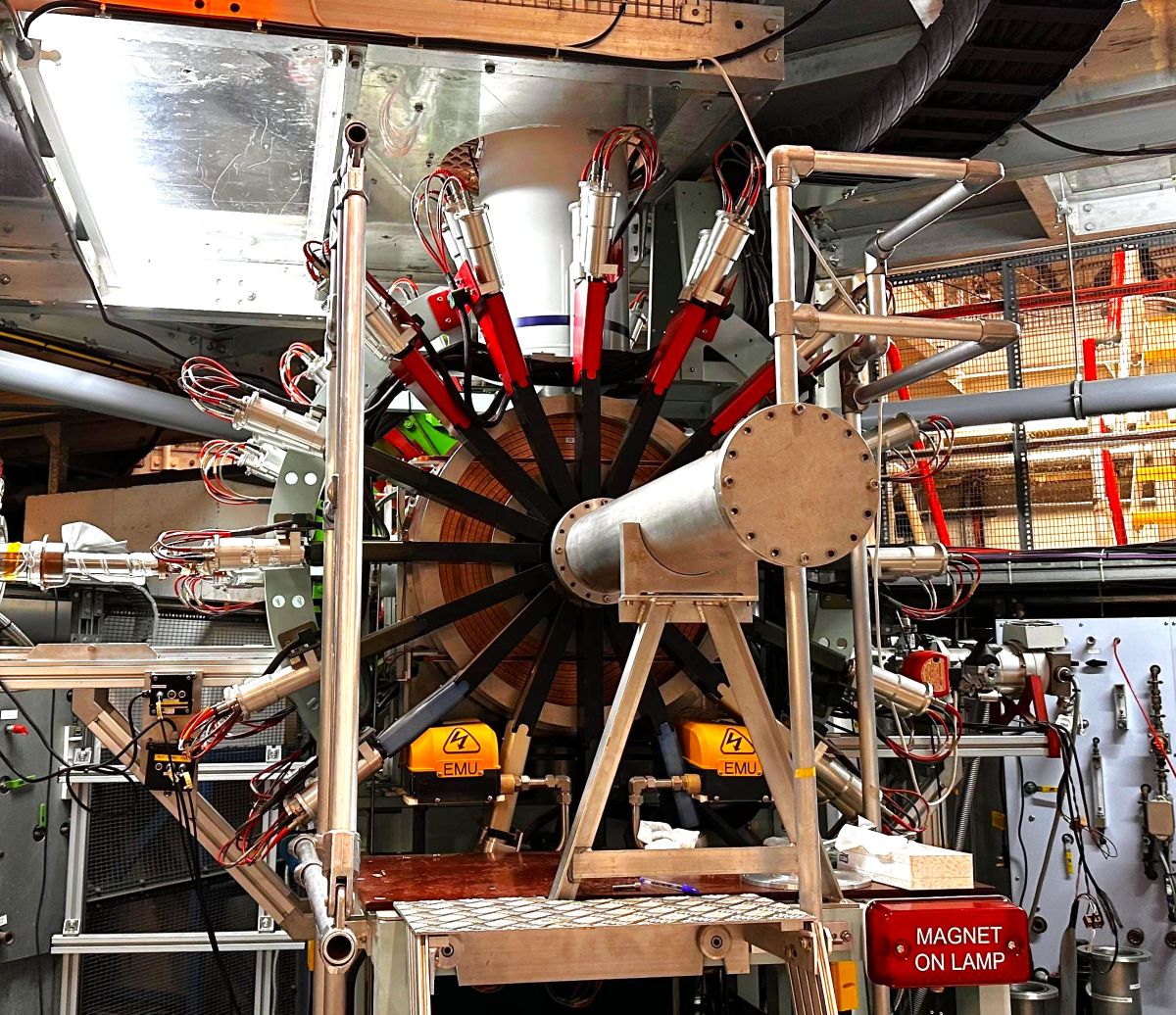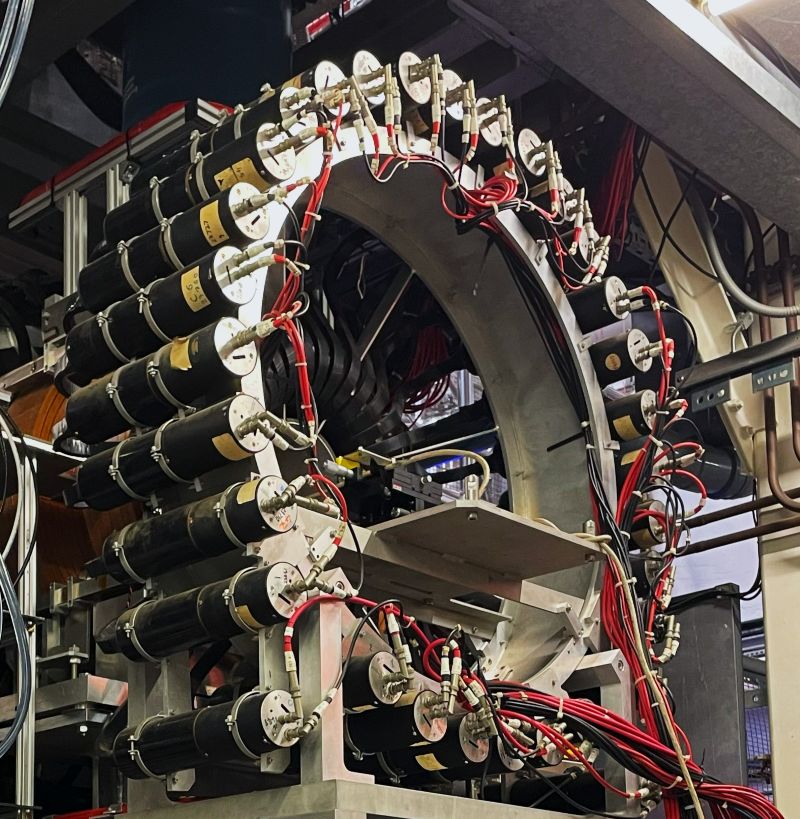
DAQ-121 – High-Speed Digitizer
The DAQ-121 is a high-performance, fully integrated digitizer developed by Nuclear Instruments for advanced SiPM-based muon detection systems. Designed to operate in demanding scientific environments, such as the ISIS Muon Facility, the DAQ-121 provides real-time digitization, processing, and streaming of high-speed analog signals from up to 32 channels simultaneously.
Key Features
- Compatible with Sci-Compiler for easy integration and development
- 32 independent analog input channels
- 12-bit ADC @ 1 GSPS per channel
- 2 GHz analog bandwidth
- Fully differential RJ45 analog inputs
- Real-time signal processing and data reduction
- Embedded Linux system on Zynq Ultrascale+ SoC
- 4× ARM 64-bit cores per module + Kintex-7 master FPGA
- Integrated power and bias control for SiPM detectors
- High-speed data streaming via Kafka and ZeroMQ
- EPICS & IBEX integration
System Architecture
Each DAQ-121 module integrates:
- 4 DAQ boards, each handling 8 channels and controlled by a Zynq Ultrascale+ SoM
- 1 master Kintex-7 FPGA aggregating and routing data
- 4× SFP optical transceivers for future optical data links
- 1 Gbps Ethernet link per board for data and control
- Integrated display for IP and voltage monitoring
- Multiple synchronization and I/O interfaces (TTL LEMO, LVDS, RJ45)

Block Diagram of the DAQ-121 system architecture. Each module integrates 4 DAQ boards, each handling 8 channels and controlled by a Zynq Ultrascale+ SoM.
Block Diagram of the DAQ-121 system architecture. Each module integrates 4 DAQ boards, each handling 8 channels and controlled by a Zynq Ultrascale+ SoM.
Signal Acquisition & Processing
- Digitizer mode: waveform acquisition on trigger (external/internal/periodic) with pre-trigger buffer up to 4 µs and post-trigger up to 120 µs
- PHA mode: real-time multichannel spectrum analysis between acquisition cycles
- Processing algorithms: exponential deconvolution, peak detection, digital CFD, timestamp extraction
- Max processed event rate: >10 MHz per channel
Calibration & SiPM Monitoring
- Real-time SiPM dark count spectrum analysis via embedded derivative trigger and QDC core
- Photon quantization and spectrum per channel
- Active gain stabilization via digital feedback and programmable bias control
- Remote access to per-channel temperature, bias, and heater status
Interfaces and Integration
- 24 TTL LEMO I/O (configurable)
- 32-channel LVDS sync connector
- Clock & trigger over LEMO or LVDS
- Integrated T0 and status packet receiver (ISIS-compliant)
- EPICS/IBEX-ready control and readout
- Kafka-ready data streaming
- Python SDK + C++ BSP + VHDL firmware (open)
Performance Summary
| Parameter | Value |
|---|---|
| ADC resolution | 12 bits |
| Sampling rate | 1 GSPS per channel |
| Analog bandwidth | 2 GHz |
| Input impedance | 100 Ω differential |
| Pre-trigger buffer | up to 4 µs |
| Post-trigger buffer | up to 120 µs |
| Energy spectrum resolution | up to 4096 bins |
| Min integration time | 4 ns |
| Max integration time | 40 µs (digitizer), 360 s (spectrum) |
| Output formats | Waveform or processed list |
| Output protocols | Kafka, ZeroMQ |
| Control protocols | ZeroMQ, EPICS |
| Power consumption | ~800 W |
| Input voltage | 115–240 V AC |
SiPM Bias and Power Control
- Bias range: 20–80 V
- Max current: 10 mA per channel
- Bias noise: <300 µV RMS
- Stability: 4 mV/°C
- 4 independent staves supported, each with ±6 V regulated power and RS232 interface
Applications
- Muon spin rotation and relaxation (μSR)
- Time-resolved spectroscopy
- Neutron and gamma detection with SiPMs
- Custom detector readout in high-rate environments



